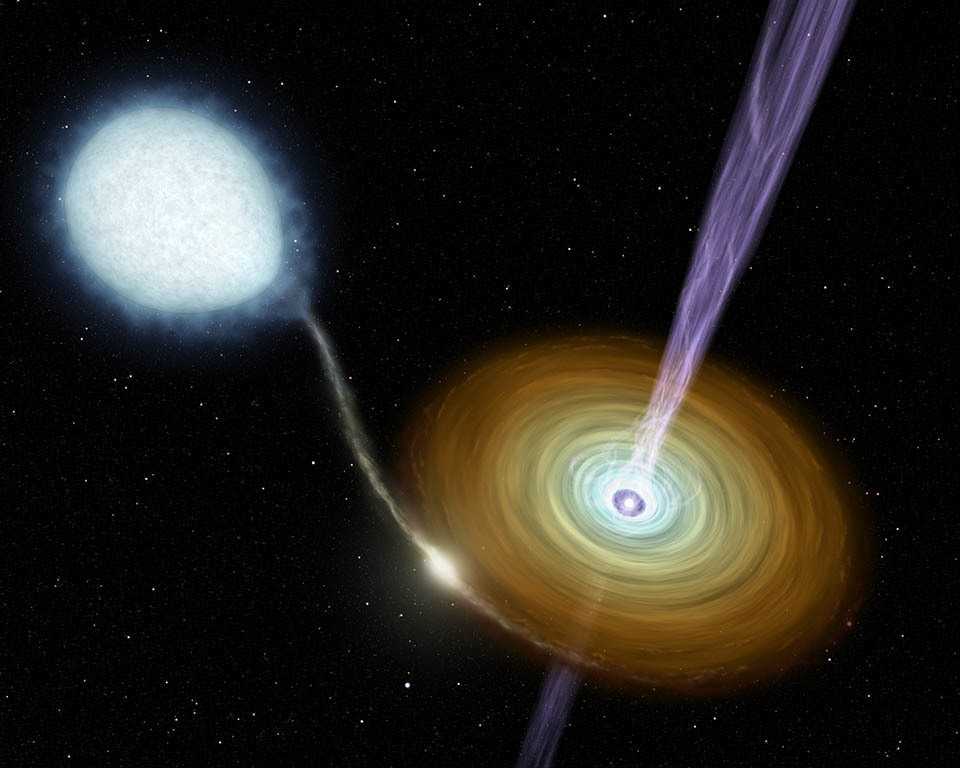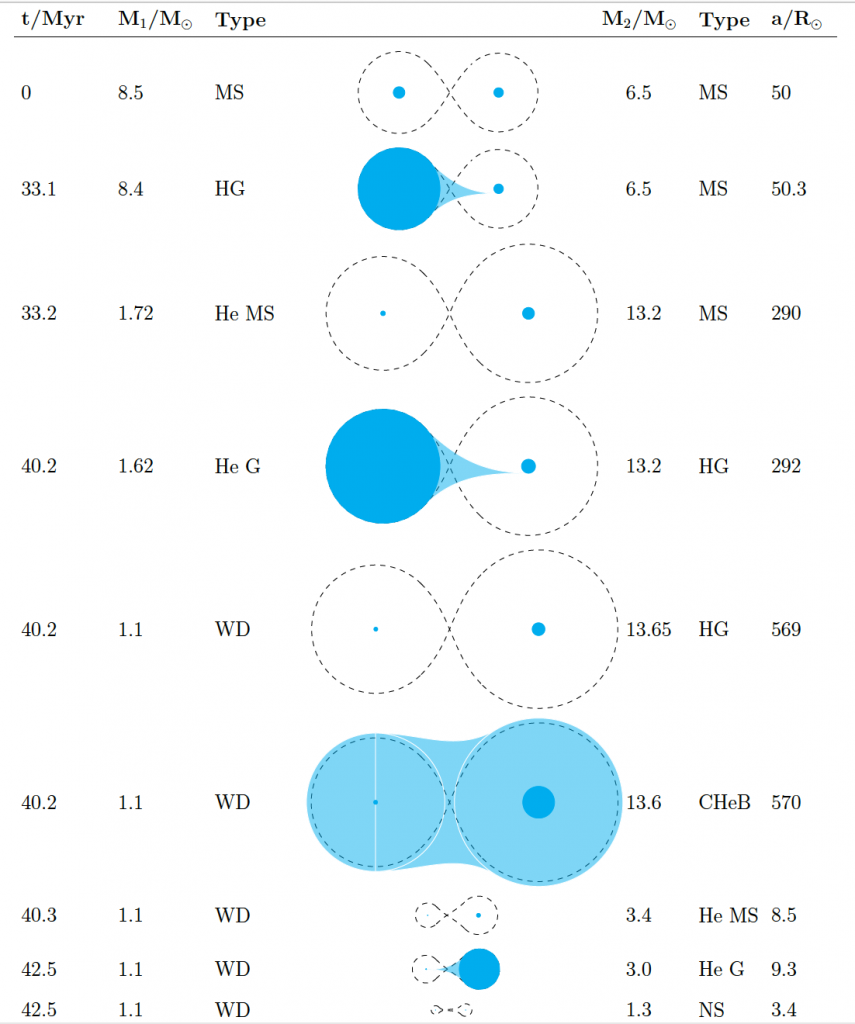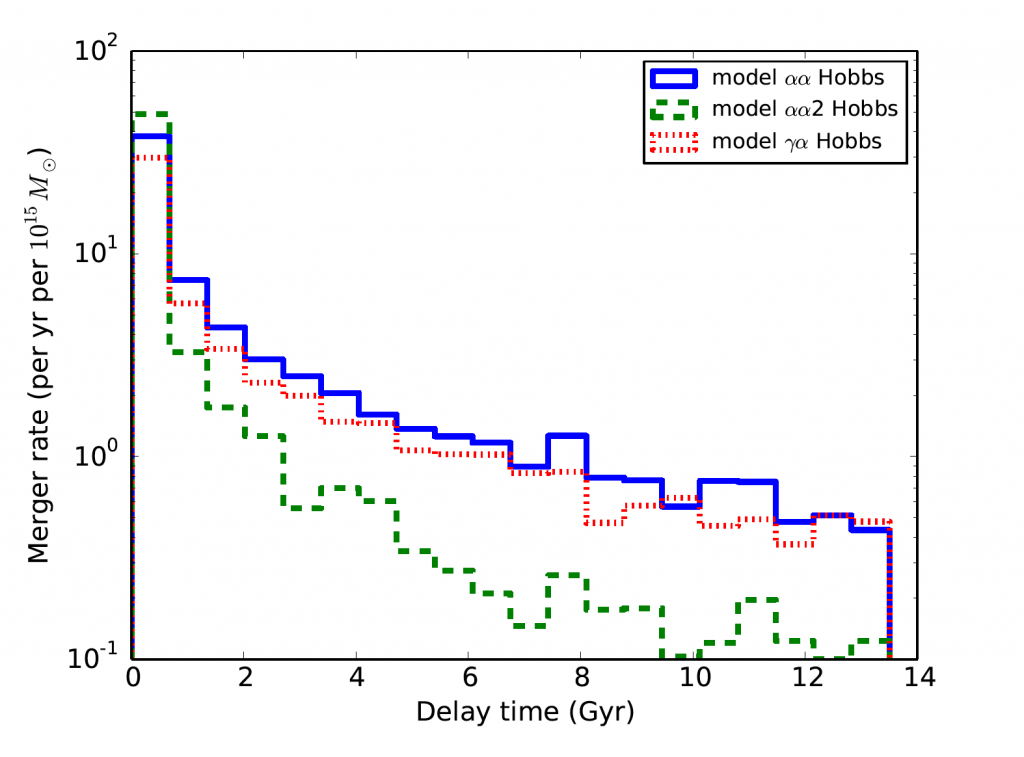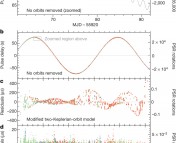Authors: S. Toonen, H.B. Perets, A.P. Igoshev, E. Michaely, Y. Zenati
First Author’s Institutions: Anton Pannekoek Institute for Astronomy, University of Amsterdam, The Netherlands; Department of Physics, Technion, Israel; Departments of Physics and Astronomy, University of California, Berkeley, USA
Status: Submitted to A&A [open access on arXiv]
Gather around, because it’s time to talk about compact binary mergers again – but not the usual ones! Today’s paper focuses on neutron star – white dwarf mergers. White dwarfs (WDs), neutron stars (NSs) and black holes (BHs) are all endpoints of stellar evolution. While binary systems involving various combinations of NSs and BHs have been the focus of a lot of work, as have those involving two WDs, the binaries we will discuss here have not received the same amount of attention. This paper presents the first systematic study of the demographics of NS-WD mergers and makes a number of predictions – including their rates and properties.

Fig 1. Artist’s concept of binary system 4U 0614+091. The larger star (upper left) is a white dwarf while the smaller one (lower right, at the centre of the disk) is a neutron star. The illustration shows jets of material shooting out of the neutron star, the mechanism behind which is not well-understood.
Raising a generation of stars
To study the formation and evolution of these binaries, the authors use binary population synthesis models. Essentially, they start out with a large number of binaries on the main sequence, simulate their evolution and then extract the ones which end in NS-WD mergers. Now, all of this does involve a good amount of physics that is not well-understood, and therefore, lots of ensuing uncertainties. But fear not! The study also explores a range of initial conditions and physical processes to get a handle on how the outcomes might change depending on our assumptions.
How to make NS-WD binaries
Let’s consider the evolution of a binary system that consists of a primary (more massive) and a secondary (less massive) star. In general, the more massive a star is, the shorter its life. Massive stars (above ~ 8-10 solar masses) can end their lives in spectacular core-collapse supernova explosions, giving birth to NSs. Lower mass stars, on the other hand, can end their lives as WDs. Our intuition suggests that the formation of a NS-WD binary would occur as follows: the more massive star in the binary explodes first since it evolves faster, forming the NS, and the lower mass star eventually evolves to a WD. As usual, we will find that our intuition can use some aid from careful study.
The paper describes four channels that result in the formation of a NS-WD binary, labeled either as NSWD (where the NS forms first) or as WDNS (where the WD forms first):
- Pathway 1: Direct WDNS – the primary becomes a WD before the secondary becomes a NS.
- Pathway 2: Direct NSWD – the primary becomes a NS before the secondary becomes a WD.
- Pathway 3: Semi-reversed WDNS – the primary becomes a WD before the secondary becomes a NS, but the stars are in a neck-to-neck race to reach the stellar endpoint first.
- Pathway 4: Reversed NSWD – similar to Pathway 2, but the evolution of the secondary typically overtakes that of the primary, so the secondary becomes a NS before the primary becomes a WD.
Fig. 2 shows an example of the direct WDNS evolution channel. The gritty and glorious details of the evolutionary channels can be found in the paper, but most importantly and quite counterintuitively, the authors found from their simulations that the most common channel of NS-WD binary formation is Pathway 1: direct WDNS, in which the WD forms first! This is because there is stable mass transfer from the more massive primary star to the less massive secondary star during the evolution. The primary ends up as a WD while the secondary becomes massive enough to end its life as a supernova, thereby producing the NS.

Fig 2. Evolution of a binary system in the direct WDNS channel. The abbreviations used are as follows: MS (main-sequence star), HG (Hertzsprung-gap star), He MS (star on the equivalent of the main-sequence for hydrogen-poor helium-burning stars) and He G (Hydrogen-poor helium-burning giant). There are two phases of mass transfer from the primary and a stage of common-envelope evolution when the secondary overflows its Roche lobe. The columns, from left to right, give the time since formation (in mega-years), mass (in solar masses) of the primary, type of the primary, mass (in solar masses) of the secondary, type of the secondary, and orbital separation (in solar radii) . The scales are approximate. Figure 1 in the paper.
Predictions and detection prospects
The orbit of the NS-WD binary shrinks due to emission of gravitational waves, eventually leading to the merger. The amount of time that passes from the start of the binary evolution to the formation of the NS-WD system and the subsequent merger is called the “delay time“. Since we have a range of binary properties, the delay times follow a distribution. For the models in this paper, the delay time distribution (DTD) peaks at early times (< 1 – 2 Gyrs), but the tail of the distribution extends up to a Hubble time, as shown in Fig. 3. The peak at early times suggests that NS-WD mergers are most likely to be found in late-type galaxies, with only small fractions expected to be found in early-type galaxies.

Fig 3. NS-WD merger delay time distributions for different models of common-envelope (CE) evolution (see legend). CE evolution is a poorly understood mass-loss phase where the orbit is thought to shrink considerably. The slope of the DTD is strongly dependent on the efficiency with which orbital energy is used to unbind the envelope in the different models. For one of the models (dashed green lines), the orbit shrinkage is higher, meaning the orbits of the NS-WD binaries formed tend to be smaller. So, it takes less time for them to merge and mergers at late times are strongly suppressed. Figure 5 in the paper.
But what can we actually expect to detect, you ask? Given the WD compositions obtained in this paper, the transients resulting from these mergers are most likely to be spectrally similar to type Ic supernovae. The gravitational wave signals from the mergers peak around 0.1 Hz, far below the sensitivity of LIGO. However, they can potentially be detected by future space-based missions such as LISA for galactic and local extra-galactic sources, and by the proposed DECIGO mission for even larger distances!





Please don’t link to spam-tastic scam-tastic wikiw***.com: “Wikiw*** uses cookies and local storage to provide you with the best user experience possible. Please enable cookies on your browser to enjoy Wikiw***.”
I don’t want “the best user experience possible.” I want to read the text of the Wikipedia article that knowledgable and non-commerically-driven non-scamming contributors wrote, and do so without some bullshit “web designer” scamster “improving” my “experience” by breaking the web. Thanks!